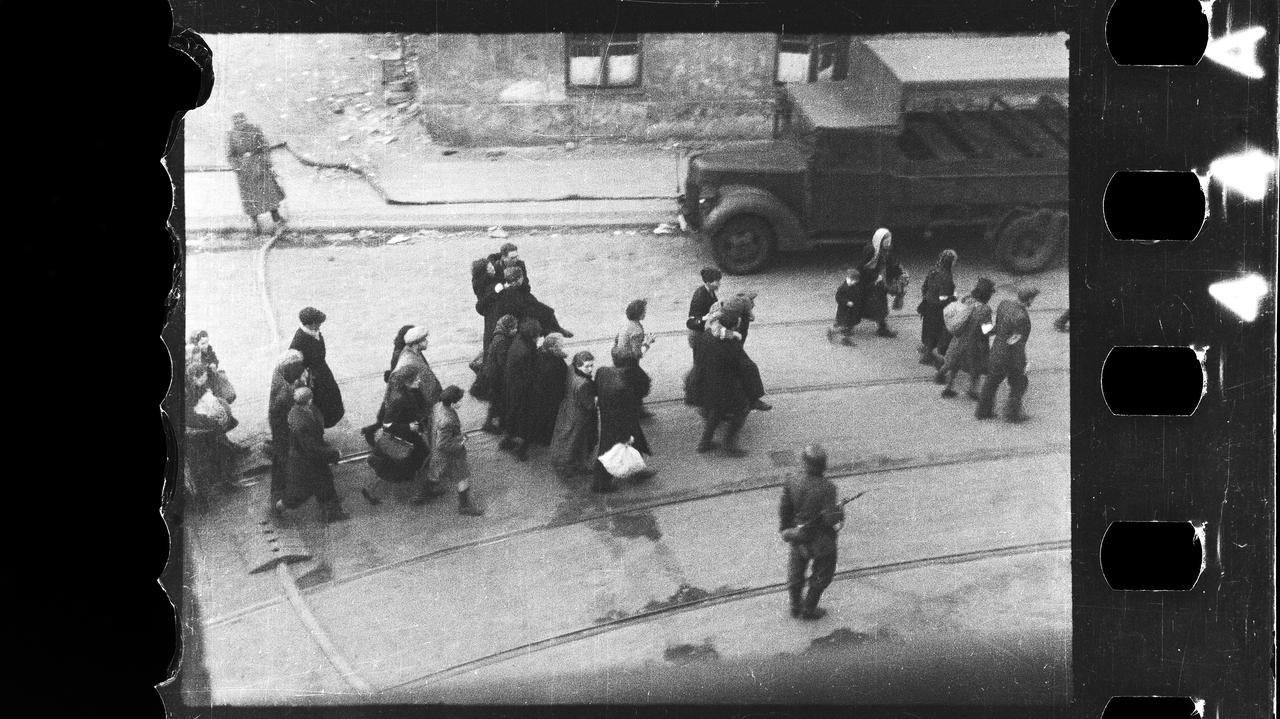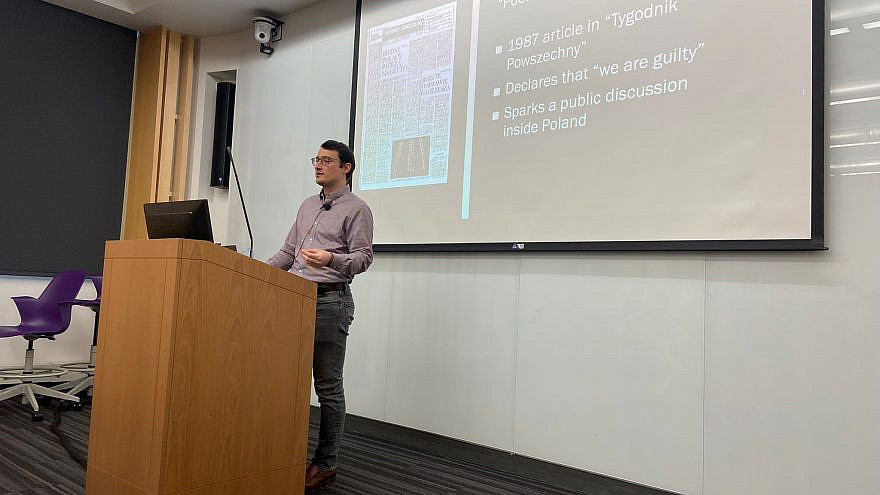The Warsaw Ghetto Uprising was not the only example of armed Jewish resistance against the Nazis during the Holocaust. A very small percentage of ghetto prisoners fought, and the revolt occurred late in the war, from April 19 to May 16, 1943.
“There is plenty of ignorance in the general public about the Warsaw Ghetto Uprising, and about the context in which it took place,” Zachary Mazur, a senior historian at the Warsaw-based POLIN Museum of the History of Polish Jews, told JNS.
The events, which commemorate the 80th anniversary of the uprising, are sponsored by Taube Philanthropies and POLIN Museum.
Ahead of his talks, Mazur told JNS that the uprising was the war’s largest, but there were uprisings in other camps, including Treblinka, and in ghettos such as Białystok. He added that a little more than 1,000 of the ghetto’s 50,000 inmates fought. “Not because no one wanted to, but because there were very few weapons available,” he said.
Mazur intends his talks to offer an overview of the uprising “but also to delve deeply into the emotions of people witnessing it, either from the inside while hiding in bunkers or from the outside hiding under false identities.”
“There is so much isolation, hopelessness, frustration and anger in the words of the people at the time,” he said.
The presentation includes photographs of a Polish firefighter snapped inside the ghetto, which the museum uncovered a few months ago. “These are some of the only images we have of the ghetto uprising that are not taken by the German perpetrators,” noted Mazur. He plans to juxtapose the “neutral” photos with propaganda ones from Nazi commander Jürgen Stroop’s report, which often illustrate the uprising.
“I want to highlight how a lot of Holocaust imagery is filtered through a German propaganda lens, and how we should be more careful when using these images to teach about the Holocaust,” he said.

‘Suddenly, they felt that they had agency’
When the uprising began 80 years ago this month, Germans and their collaborators had already killed the overwhelming majority of Jews who were murdered during the Holocaust between June 1941 and November 1942, according to Mazur. He said one of the main reasons that Jews did not rise up earlier was that many did not believe that the Germans actually intended to murder every Jew.
There was also what he calls the “atomization” of society.
“People needed to work together on a much larger scale, instead of working only to save themselves and their immediate families, in order to accomplish something,” he said. “A common thread among survivor stories is an existing network of support; either a scouting group, a political party or simply a friend group. But no one could do anything alone, and that goes for resistance, too.”
By the time that Jewish resistance fighters began to cooperate broadly, it was too late, according to Mazur. He stressed, however, that there was plenty of resistance—likely a lot of resistance that is unknown today because it didn’t succeed.
“Some people survived many harrowing events and near brushes with death, but then came up short, dying in 1944 or even 1945,” he said.
In the Warsaw Ghetto, 90% of the ghetto had already been cleared and the people murdered in Treblinka by January 1943 when SS and German police tried to clear out the remaining 10%. The latter fought back.
“A small group of lightly armed, Jewish fighters managed to repel the Germans so forcefully that they retreated and gave up on their plans. This gave so many hopeless people hope,” said Mazur.
“Most Jews in the ghetto had been so beaten down, despondent. They had lost everything and everyone. It is no surprise that they did not think much about the future,” he added. “But this event in January 1943 changed things. Suddenly, they felt that they had agency.”
Warsaw inmates began building bunkers and other hiding places in preparation for another German raid. They hoped to wait out the end of the war, so they gathered whatever supplies they could, according to Mazur.
“The Germans’ defeat at Stalingrad and earlier losses convinced many that the end was near,” he stated. “Then the Germans did return on April 19, 1943, and thus the uprising began.”

























